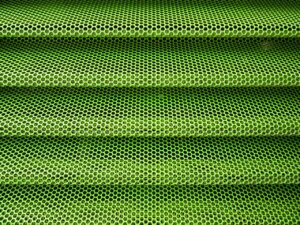Precision Cutting Technologies: What You Need to Know

How Do Precision Cutting Technologies Work?
First, precision cutting technologies typically fall under the machining umbrella. What sets precision cutting apart from other types of machining is the fact that it’s made specifically for tight tolerances. In other words, precision cut products need to be as dimensionally accurate as possible. There is no room for error with these products, which is why we sometimes refer to it as micromachining. Precision cutting allows us to address every minute detail of projects. It relies upon a machining tool with cutting edges, sharpened to a fine point. The finesse of this point makes it easier for us to shave down parts, ensuring we get the desired shape. Fun fact: we call the markings left over from this process the “wear pattern”.
Typically, when utilizing precision cutting technologies, we work with materials like wood, glass, and metal—though others may enter the mix as well, depending on the order. While we can precision cut highly complex shapes, the more complex the project, the lower the volume (typically). Not only do we need accuracy in cases like these—we need repeatability. With technologies like these, we have the capacity to produce the same results over and over, as consistently as possible.
What Types of Tools Do We Use for Precision Cutting?
Okay, but what types of tools fall under the precision cutting technologies label? Some of the most popular precision machining tools include lathes and mills. We use these to rotate the piece we’re working on, moving it around the tool bit. We may also use guillotines, shears, and additional automated cutting machines.
Other machines we sometimes use in the precision cutting process include drill presses, usually used in conjunction with column-type beds. You’ll see these clamp onto a tabletop, or bench, which enable us to drill into different materials at varying angles. It’s easier to access harder-to-reach angles with these machines, which makes it even easier for us to make the types of products we need. The more variety a machine can offer, the better. In the long term, that means we can execute a greater variety of projects without having to shift between or invest in unnecessary tools or machines.
What Types of Materials are Conducive to Precision Cutting?
We discussed the types of products we work on with precision cutting. But what about the materials we use to execute the process? Some of the more popular metals we use for precision cutting technologies include aluminum, copper, brass, and steel. When considering which types of metals we must use, we must take into account the types of work we’re approaching, as well as the ultimate end use of the product. However, we don’t always use metals on their own. At times, we combine them with glass or ceramics in order to enhance the final product.
Should I Hire a Contract Manufacturer or A Toll Manufacturer?
When working on an industrial precision cutting project, you may have to outsource. In fact, this is fairly common. A third party often already has the equipment you need, and additionally can sometimes help you save money. Rather than investing in new cutting tech yourself for the long term, you pay to outsource the project. Likewise, rather than hiring and training permanent employees, you rely on the expert services of an experienced manufacturer.
You’ll typically find two different types of third party manufacturers: contract manufacturers and toll manufacturers. On the surface, the two may seem rather similar. However, they have key differences that we shouldn’t ignore as you outsource cutting services.
Obviously, contract manufacturing involves signing a contract—and what you’re signing essentially stipulates that the manufacturer handles the project from beginning to end, covering not only the process but the procurement of the raw materials. A toll manufacturer, on the other hand, handles the manufacturing (in this case, precision cutting services) and offers the necessary facilities—however, you provide the raw materials.
Ultimately, you must choose the option that works best for your specific needs, whether you’re working through die cutting processes or something else entirely. The advantage of choosing the raw materials yourself is that you have control over the quality of those materials—and at times, you may save money as well. If you have a specific connection to the provider of the raw materials, this option could be more cost efficient.
How Much Is a Cutting Machine?
There isn’t a single set price for a cutting machine. The pricing varies based on the type of cutting machine, its special features and qualities, and of course the size of the machine. Finding the right cutting machine can feel intimidating. However, CTI has the expertise and resources necessary to guide you through the process and provide recommendations. We also offer contracting services, if buying a machine isn’t right for you.
Want to learn more about precision cutting technologies? CTI has you covered. Give us a call at 419-924-5566 or contact us here. We’re ready to help!
- << < Previous Post
- 1
- 2
- ...
- 11
- ...
- 241
- 242 Next Post > >>

